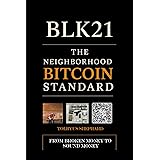What is Bitcoin? Understanding Bitcoin Explained Simply
Welcome to this in-depth guide accompanying our video, “What is Bitcoin? Bitcoin Explained Simply for Dummies.” This post will expand on the fundamental concepts introduced in the video, offering a clear, accessible understanding of Bitcoin and its revolutionary implications. We begin by exploring the historical evolution of money itself, setting the stage for why a decentralized digital currency like Bitcoin emerged as a groundbreaking innovation.
The Evolving Nature of Money: From Trusting a ‘Thing’ to Trusting ‘Someone’
Before understanding Bitcoin, we must understand money. Money, at its core, represents value. Throughout history, societies have utilized various items to represent this value. Salt, wheat, shells, and particularly gold, served as mediums of exchange for centuries.
However, the crucial element for any form of money is trust. People must trust its inherent value. They must believe it will retain its purchasing power. This trust allows them to redeem that value in the future.
For millennia, trust resided in the physical commodity itself. A gold coin was valuable because it was gold. This system proved effective for thousands of years.
From Gold to Paper: A Shift in Trust
The practicalities of carrying heavy gold or other commodities led to a significant shift. Paper money emerged as a convenient alternative. Initially, paper receipts represented actual deposits of gold or silver held by banks or governments. You could exchange these receipts for the physical commodity upon demand. These “bills” merely served as a practical instrument, backed entirely by a tangible asset.
However, a profound change occurred around a century ago. The direct link between paper money and its gold backing dissolved. This complex macroeconomic shift led to the abandonment of the gold standard by many nations, including the United States in the early 1970s. Governments then guaranteed the value of their paper currency. The trust model fundamentally transformed. We moved from trusting a tangible “thing” to trusting “someone” – specifically, the government or central bank.
Understanding Fiat Money: By Government Decree
This shift birthed “Fiat Money.” The term “fiat” is Latin, meaning “by decree.” Fiat money, such as the US Dollar or Euro, holds value because a government legally mandates it. It is considered legal tender, meaning it must be accepted for payments within that jurisdiction.
Fiat money, while convenient, presents two significant drawbacks:
- **Centralization:** A single authority, typically a central bank or government, controls its issuance and management.
- **Unlimited Supply:** There are no inherent limits on how much fiat money can be printed. Governments can inflate the money supply at will.
This ability to print unlimited money carries severe consequences. Flooding the market with more currency diminishes the value of each individual unit. This phenomenon is known as inflation. Consequently, the purchasing power of your money erodes over time. What once cost a dollar may later require more dollars. This is often misunderstood as rising prices; in reality, your money’s value is simply dropping.
For instance, Venezuela has experienced hyperinflation on an extreme scale. The government’s extensive money printing led to an annual inflation rate reaching over 1,700,000% in 2018, as reported by the IMF. This forced citizens to weigh banknotes instead of counting them for transactions.
The Double Spend Problem in a Digital Age
With fiat money established, the transition to digital money seemed natural. Central authorities already managed monetary policy. Why not digitize most transactions? Today, physical cash accounts for a negligible portion of the global money supply. Credit cards, wire transfers, and digital payment platforms dominate our financial interactions.
However, digital money introduces a unique challenge: the “Double Spend Problem.” If money exists as a digital file, what prevents someone from simply copying it multiple times and spending it repeatedly? In a centralized system, banks solve this. They maintain a private, central ledger. This ledger meticulously tracks every account balance and transaction. Everyone trusts the bank, and the bank manages its ledger on its secure servers. This centralized approach prevents double spending by ensuring only one valid transaction occurs per digital unit.
Centralization’s Perils: Corruption, Mismanagement, and Control
Granting a central authority control over the money supply bestows immense power. History provides ample evidence of this power’s potential for abuse:
- **Corruption:** Absolute power often corrupts. The Wells Fargo scandal, for example, exposed widespread misconduct. Employees secretly created millions of unauthorized bank and credit card accounts between 2011 and 2016. This was done to meet aggressive sales targets, illustrating how institutional pressure and centralized power can lead to systemic fraudulent practices.
- **Mismanagement:** Central authorities might prioritize their interests over public welfare. During the 2008 financial crisis, many governments and central banks printed vast amounts of money. This “quantitative easing” aimed to bail out collapsing banks and stimulate the economy. While averting a deeper crisis, it also caused inflation and devalued citizens’ savings.
- **Control:** Governments or banks retain ultimate control over your funds. They can freeze accounts, deny access, or even de-legitimize currency. In 2016, India demonetized 500 and 1000 rupee notes, rendering 86% of its circulating cash worthless overnight. This action, aimed at curbing black money and fake currency, highlighted the government’s absolute power over its citizens’ finances.
Before 2009, creating a truly independent, digital alternative to this centralized system seemed impossible. No one had effectively solved the double spend problem without a central intermediary.
Bitcoin Emerges: A Decentralized Alternative
Everything changed in October 2008. A pseudonymous individual or group named Satoshi Nakamoto published a whitepaper online. Titled “Bitcoin: A Peer-to-Peer Electronic Cash System,” this document proposed a revolutionary solution. It described a system for digital money that solved the double spend problem without any need for a central authority. In 2009, the Bitcoin network officially launched, ushering in a new era for money.
What is Bitcoin? The Transparent, Decentralized Ledger
At its heart, Bitcoin is a transparent, decentralized ledger. This distinguishes it fundamentally from traditional banking systems. Consider a bank’s ledger: it is opaque, proprietary, and controlled solely by the bank. You cannot view individual transactions or balances directly. In contrast, Bitcoin’s ledger, known as the blockchain, is public. Anyone can inspect it at any time. All transactions and balances are openly recorded.
This transparency operates under a veil of “pseudo-anonymity.” While you can see every transaction and every Bitcoin address, the identities of the individuals behind those addresses remain private. You can track value movement, but you cannot easily discern who sent what to whom without external information.
For example, in May 2010, a user named Laszlo Hanyecz made history. He posted on a Bitcoin forum, offering 10,000 Bitcoins for two pizzas. Another user accepted, marking the first recorded real-world purchase with Bitcoin. Today, those 10,000 Bitcoins are worth well over $100 million, a testament to Bitcoin’s incredible growth and the value it has accrued since its inception.
Bitcoin is also decentralized. No single computer hosts the blockchain. Instead, thousands of computers worldwide participate in the Bitcoin network. Each participant holds a copy of the entire ledger. These copies are constantly updated and synchronized. To compromise or “hack” the Bitcoin ledger, one would need to simultaneously attack and alter thousands of geographically dispersed computers. This distributed nature makes Bitcoin incredibly resilient to censorship and tampering.
Like most money today, Bitcoin exists purely in digital form. There are no physical Bitcoin coins to touch or hold. Ownership means possessing the private keys that grant you the right to access a specific Bitcoin address record on the ledger. You can then authorize sending funds from that address to another.
The Advantages of Bitcoin: Financial Empowerment and Innovation
Bitcoin offers several compelling advantages over the traditional financial system:
- **Complete Financial Control:** With Bitcoin, you alone control your funds. Private keys grant you sovereign ownership. No government, bank, or third party can unilaterally freeze your account or confiscate your holdings. This represents a significant return of power to the individual.
- **Reduced Transaction Costs:** Bitcoin streamlines the money transfer process. It cuts out many intermediaries typically involved in wire transfers or international payments. Consequently, Bitcoin transactions can be significantly cheaper and faster, particularly for cross-border transfers. This efficiency benefits both individuals and businesses.
- **Programmable Money:** Unlike fiat currencies, which were retrofitted for the digital age, Bitcoin was designed digitally from its inception. This inherent digital nature allows for additional layers of programming. This capability paves the way for “smart money” applications, such as automated payments or self-executing contracts, which can unlock new financial services.
- **Financial Inclusion:** Bitcoin provides a powerful tool for the approximately 2.5 billion unbanked or underbanked adults globally. These individuals often lack access to traditional banking services due to geographical constraints, poverty, or lack of identification. With just a mobile phone and internet access, they can participate in the global economy using Bitcoin, requiring no permission from traditional institutions. The widespread adoption of mobile technology in developing nations amplifies this potential.
- **Limited and Predictable Supply:** A critical feature of Bitcoin, not present in fiat money, is its fixed supply cap. Only 21 million Bitcoins will ever be created. This scarcity is hard-coded into its protocol. This predictable, finite supply protects against inflation caused by arbitrary money printing, positioning Bitcoin as a potential store of value similar to digital gold.
Today, Bitcoin’s acceptance continues to grow. Many online and offline merchants now accept Bitcoin directly. You can book flights, reserve hotels, or even use Bitcoin debit cards for everyday purchases. The journey toward global mainstream adoption is ongoing, but Bitcoin undeniably represents a monumental shift. It is the internet of money, decentralizing financial power and offering a robust alternative to a system that has long been centralized.







